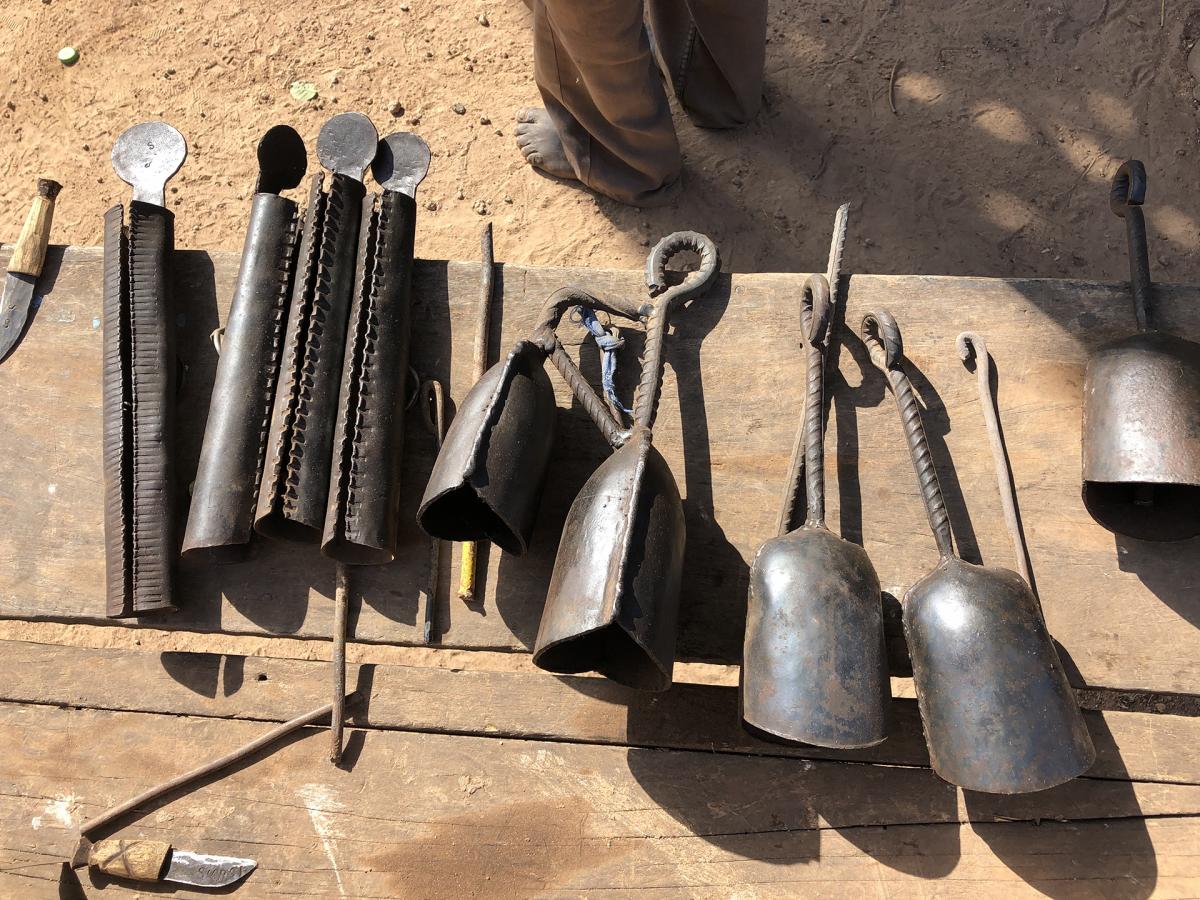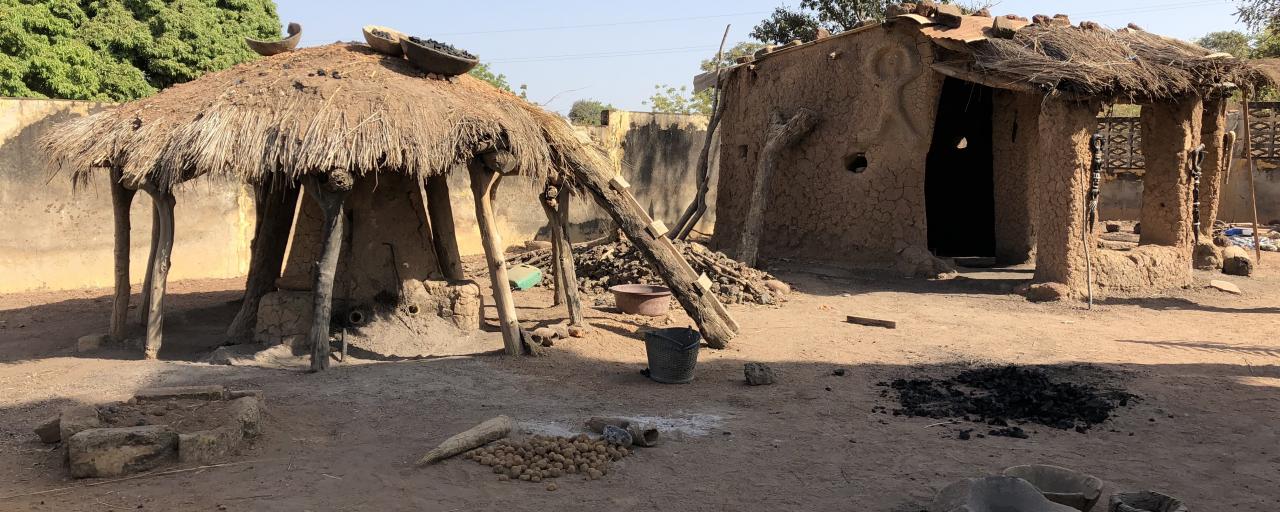Submitted by SafariADV on Fri, 2019-02-22
We are at Korhogo in the Ivory Coast; yesterday morning we went to the village of Koni, that is located 15 km North of Korhogo.
The village of Koni is known as the village of the blacksmiths; here in fact the master blacksmith Soro Chukama extracts and processes iron, still following the traditional procedure, that has been handed down over the centuries from father to son.
The process of extraction of iron takes about 24 hours, so we were here in the morning to attend the first part of the procedure and today we have seen the final part.
It was very interesting and Soro and his sons are very hospitable, and they are happy to show us their art, that they are very proud of.
They explained that they extract the iron from the earth, not far from here in fact there is a place where there is this particular soil very rich in iron, in fact taking a handful of it, it can be seen how much heavier it is than the common land.
By approaching a magnet to the earth, one immediately understands that it contains iron, in fact the earth immediately attaches itself to the magnet.
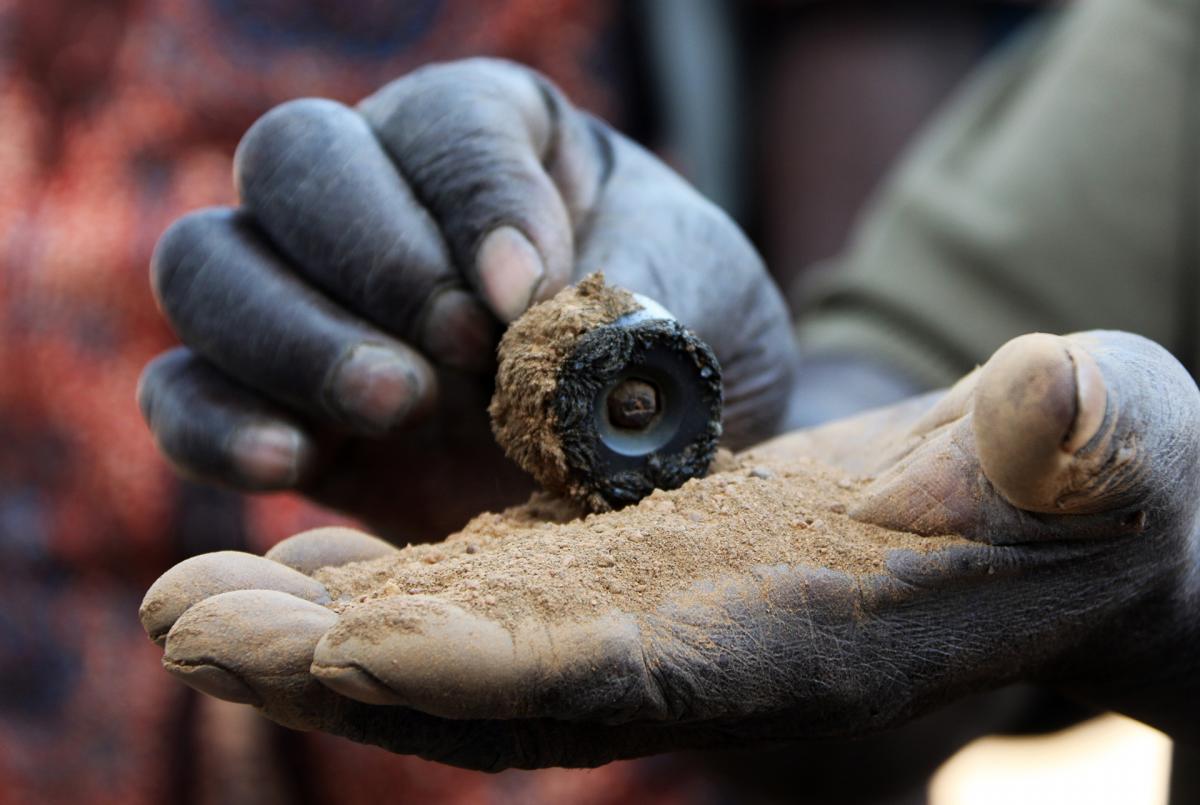
The first thing to do is to wet the earth and create sand balls, that are made to dry in the sun; when they are dry they are ready for the next passage, they are so heavy that they look like iron instead of earth.
The oven that is used is made of terracotta, it looks like a hut but is much narrower and has a thatched roof, that is supported by a wooden ladder.
At the base of the oven there are two holes where two vents made of raw earth are positioned; they are very important for ventilation.
One of Soro's sons goes up the ladder, carrying the earthen balls and the coal, the fire is already lit inside the oven; from the hole in the roof he inserts both the earthen balls and the coal creating layers: he starts with a layer of coal, then one of earthen balls, then coal, then still earth up to insert 400 balls of earth and, finally, everything is covered with coal.
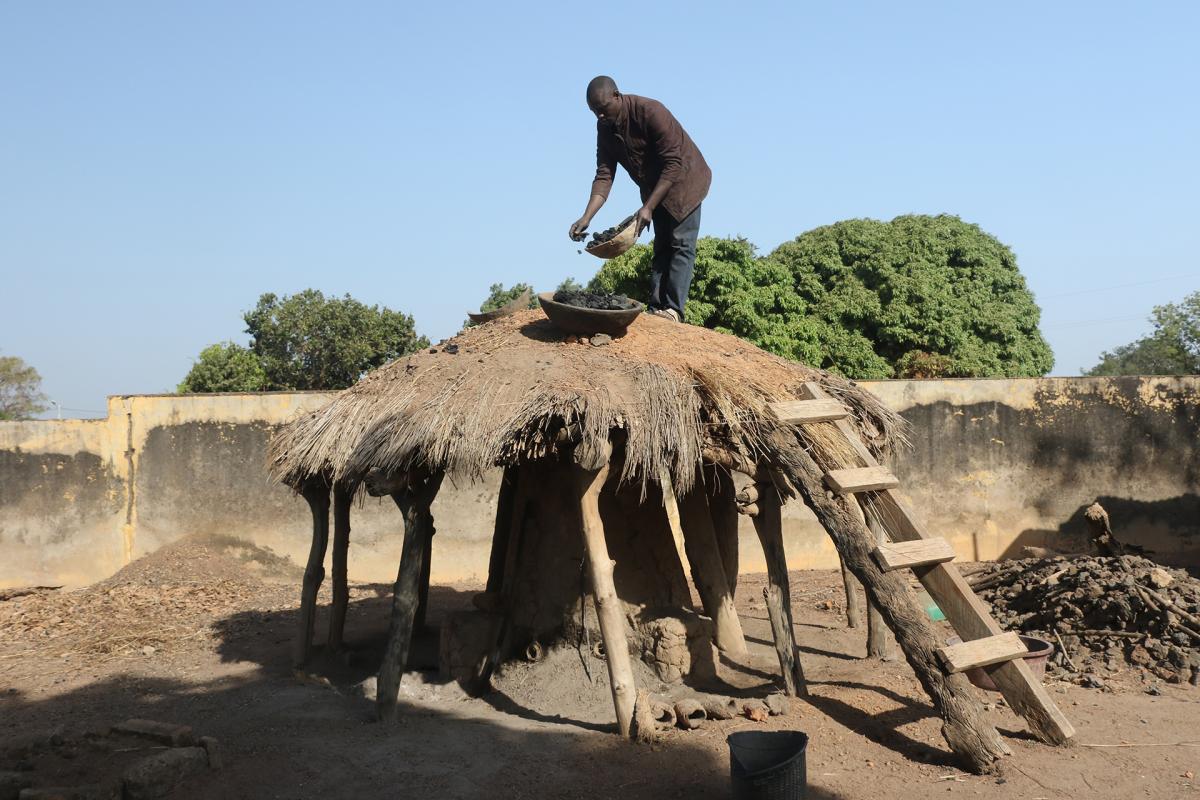
At this point the oven will remain lit for about 24 hours, in order to melt the iron contained in the earth, the liquefied iron will percolate on the bottom of the oven.
This morning we came back to the village to see the result of the melting.
One of Soro's sons, with a shovel, breaks the wall of the oven at the base, where there are the two fireplaces for ventilation; he extracts the chimneys and continues to dig, removing the earth and the ash.
Then, with two iron grapples, he hooks and pulls out a shapeless piece; at first sight it looks like a stone, but in reality it is the iron that has melted and subsequently solidified at the base of the oven.
One can sense how heavy it is from the fatigue he makes in extracting it; once it is brought into the open air Soro spills it over the water and a cloud of steam rises from the iron, from which it is understood that its temperature is high even though the oven was already off.
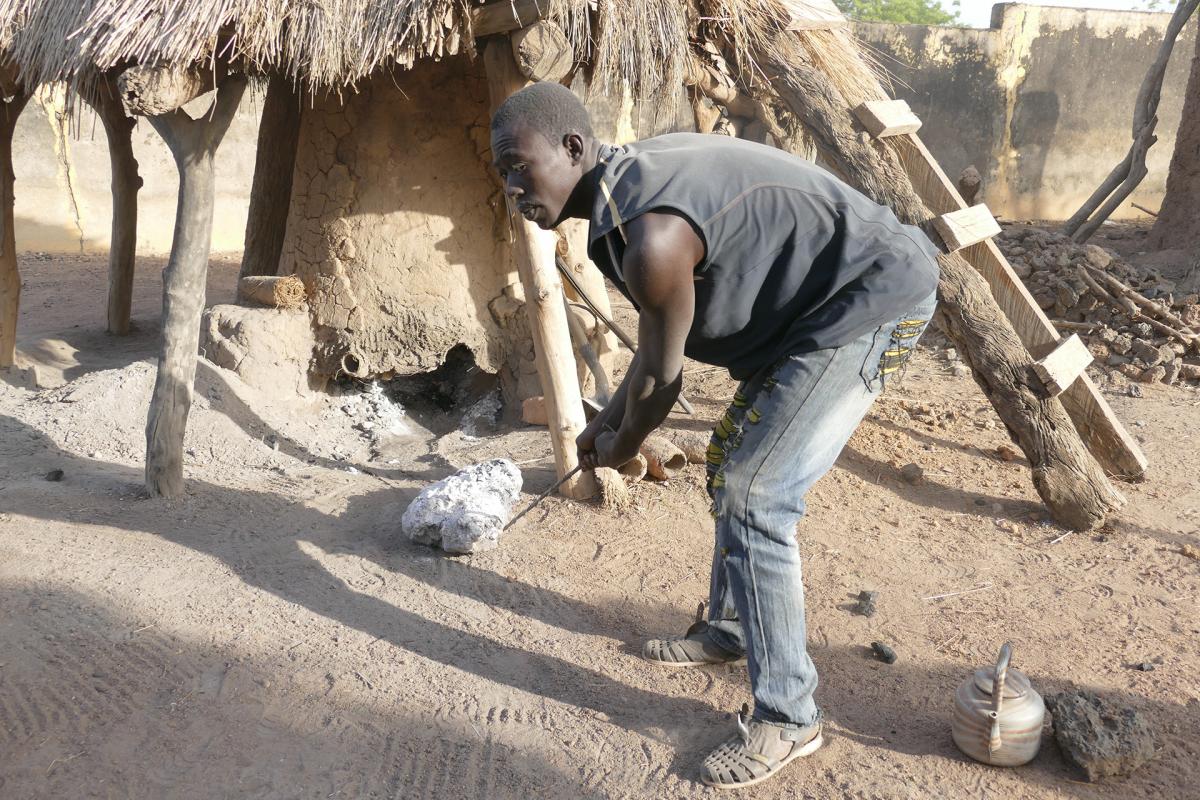
With a hammer they detach some pieces that, once cooled, are put in a stone container.
The iron block contains many impurities, such as parts of sand and coal, to make it pure the small pieces, contained in the stone container, are crushed with a stone, until they are pulverized.
Once reduced to powder, they are transferred into a wooden bowl that is repeatedly beaten; in this way the lighter parts, that are the earth and the coal, come out easily, while the iron, much heavier, remains on the bottom of the bowl.
Subsequently, with the aid of a magnet, they attract the iron, separating it from the last residues of impurities that have remained in the bowl.
At this point the iron powder is transferred to a small earthenware bowl and is brought into the furnace where, with the help of two bellows, it is heated until it reaches the melting point.
It takes hours to completely melt the iron, a hard job for those who operate the bellows, also for this the others play some musical instruments to give them the rhythm and make them feel less tired.
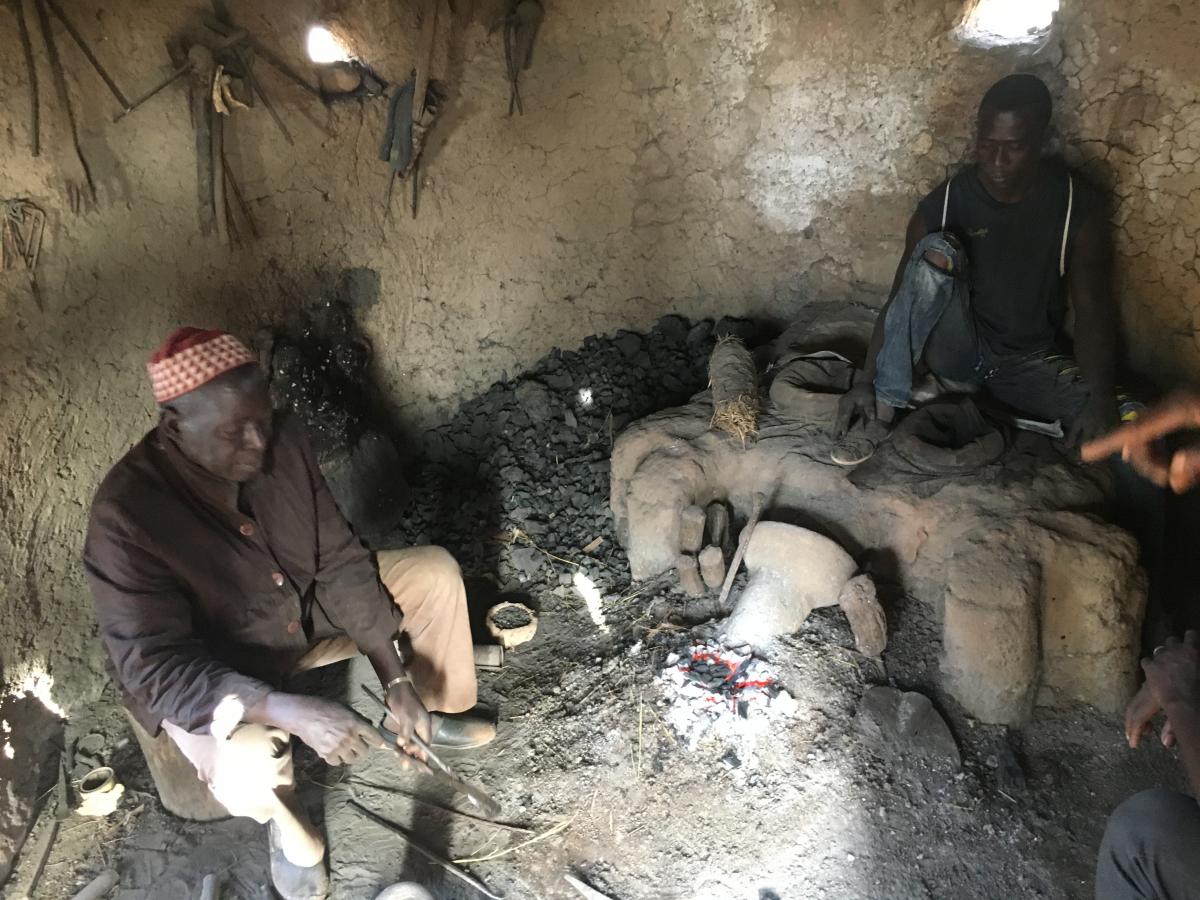
Once the molten iron is obtained, the desired shape is drawn into the earth, usually an isosceles triangle with a very narrow and very high base; liquid iron is poured into it and allowed to cool and solidify.
Finally, once it has cooled, it is taken with special pliers, it is heated again in the furnace and beaten with hammers or cylindrical pieces of iron, resting on a small anvil; once the desired form is obtained, the work is finally finished; Soro, at this point, engraves a small "S" on his products, it is his trademark.
In the furnace, in a corner, there is a small fetish that protects the work of the blacksmiths.
It was very interesting to witness the whole process of extraction and processing of the iron, Soro tells us that in the area there are other villages of blacksmiths, but they do not extract the iron from the earth, but melt metals and scrap; the working method of Soro and his family allows to obtain a higher quality product.
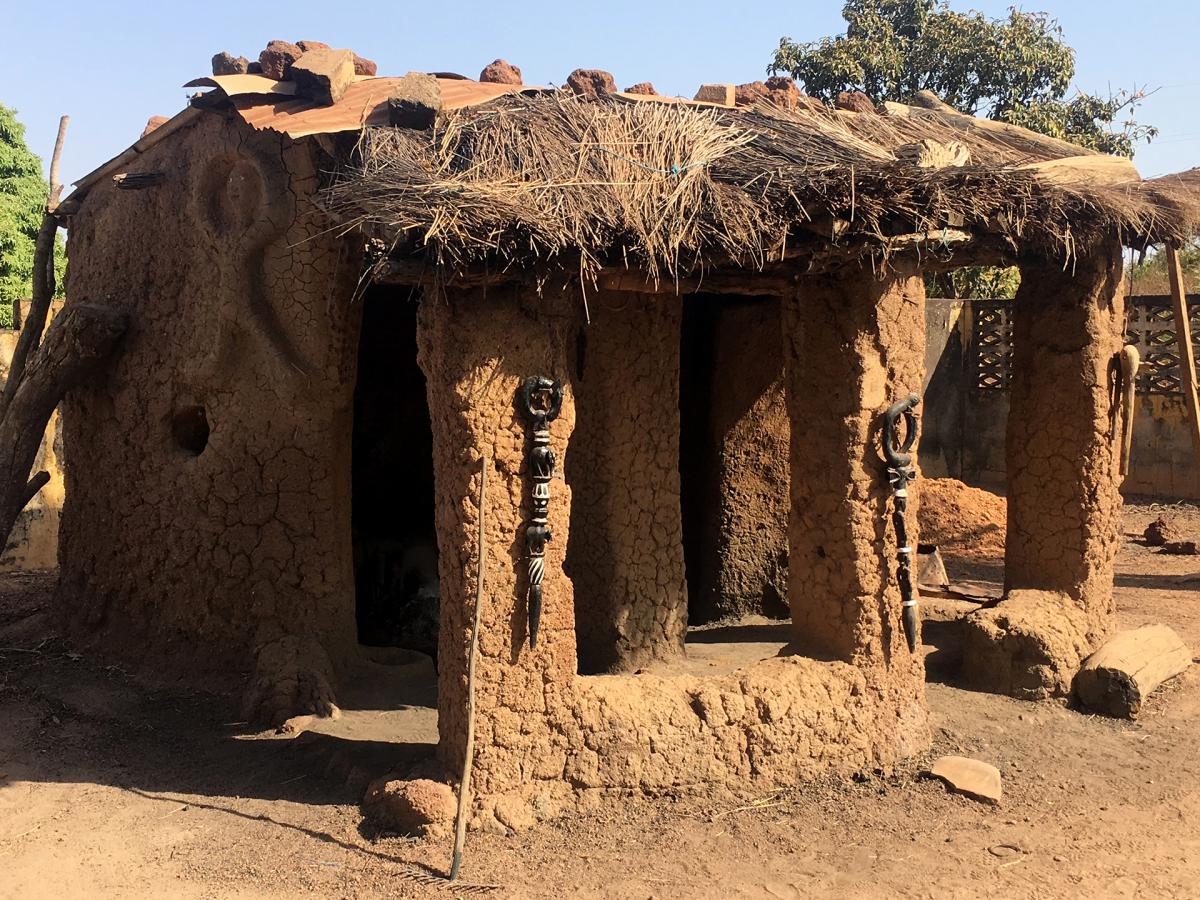
In the courtyard of the village there is a banquet with some items for sale, they are very rudimentary, but it is still fun to bring home something from here, after seeing the fatigue with which they are made.
Soro seems happy with our questions and likes to chat with us; he showed us some old photos of when he passed the first level of the rites of passage of the Senoufo, the Poro, and when he passed the last of the 3 levels, the latter is not exceeded by everyone and for him is a source of pride .
We buy some objects and he gives us a bronze bell, it's really nice, Soro and his family are very hospitable; we were very pleased to meet them and find out about their work.
